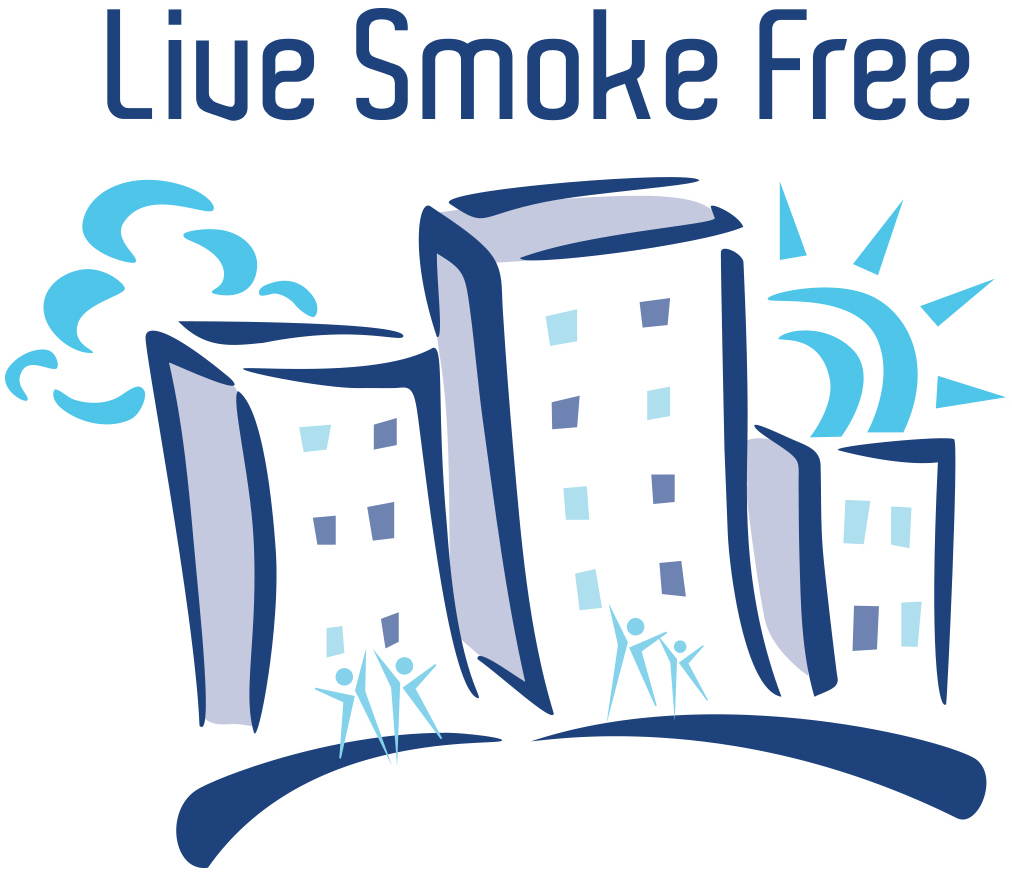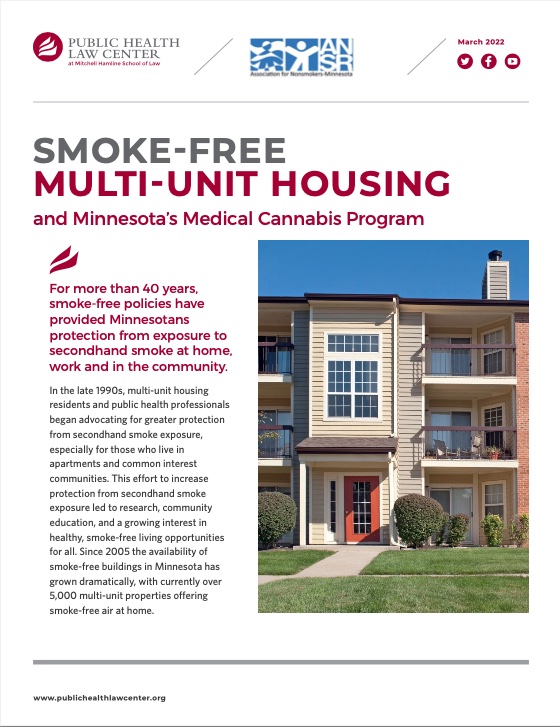
Smoke-Free Multi-Unit Housing and Minnesota’s Medical Cannabis Program
Excerpt
For more than 40 years, smoke-free policies have provided Minnesotans protection from exposure to secondhand smoke at home, work and in the community. In the late 1990s, multi-unit housing residents and public health professionals began advocating for greater protection from secondhand smoke exposure, especially for those who live in apartments and common interest communities. This effort to increase protection from secondhand smoke exposure led to research, community education, and a growing interest in healthy, smoke-free living opportunities for all. Since 2005 the availability of smoke-free buildings in Minnesota has grown dramatically, with currently over 5,000 multi-unit properties offering smoke-free air at home.
Since 2015, state law has allowed Minnesotans with qualifying medical conditions and certification from a participating health care practitioner to register for the state’s Medical Cannabis Program, allowing enrolled patients to consume medical cannabis (i.e., marijuana) in pill, oil, or vapor form.¹
During the 2021 state legislative session, Minnesota’s Medical Cannabis Program was expanded to allow enrolled patients to purchase the raw flower form of cannabis for consumption once appropriate regulations are put in place (i.e., legalizing smoking² as a form of medical cannabis consumption by enrolled patients).³
What does this mean for existing and new clean air policies, such as the Minnesota Clean Indoor Air Act and individual smoke-free housing policies? The FAQ linked below has answers to several commonly asked questions by property management and residents of multi-unit housing regarding cannabis and smoke-free policies in Minnesota.

